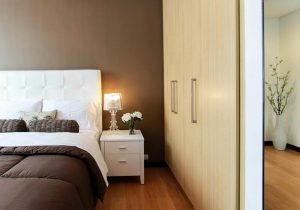Bring Harmony to Your Home with Feng Shui
Our homes are not just places to eat and sleep; they are extensions of ourselves, spaces that impact our well-being and energy. Feng Shui, an ancient Chinese practice, offers a holistic approach to creating harmonious living environments that promote balance, well-being, and positive energy flow. We’ve got the basics of Feng Shui and how you can use it to bring harmony to your home.
 What is Feng Shui?
What is Feng Shui?
Feng Shui, pronounced “fung shway,” is an ancient Chinese art and science that focuses on the arrangement of spaces to achieve harmony and balance. Translated as “wind” and “water,” it is based on the idea that the arrangement of objects and spaces affects the flow of energy, or “chi,” in a way that can enhance or detract from the quality of life.
Feng Shui takes into account the orientation of your home, the layout of rooms, the placement of furniture, and the use of color and decor. By creating a harmonious environment, it is believed that you can enhance your well-being, relationships, and prosperity.
Key Principles of Feng Shui
- The Bagua Map: The Bagua is an essential tool in Feng Shui, a map that divides your space into nine areas, each corresponding to different aspects of life, such as wealth, love, and career. By aligning the Bagua map with your floor plan, you can pinpoint areas that need attention and make adjustments to improve those aspects of your life.
- Yin and Yang: Yin and Yang represent the balance of opposing forces. In Feng Shui, it’s essential to maintain a balance between the active (yang) and passive (yin) elements in your home. For example, a bedroom should be a more yin, restful space, while a living room can be yang, a more active and social area.
- Five Elements: Feng Shui incorporates five elements – Wood, Fire, Earth, Metal, and Water. Each element corresponds to specific colors, shapes, and attributes. Balancing these elements in your home is crucial for harmony. For example, adding the color red (Fire element) to a predominantly blue (Water element) room can create balance.
Practical Tips for Applying Feng Shui at Home
- Declutter and Organize: A cluttered home can block the flow of positive energy. Regularly declutter your space, removing items that no longer serve a purpose. Ensure everything has a designated place to keep your home organized.
- Choose the Right Colors: Color is a powerful tool in Feng Shui. Select colors based on the Bagua map and the elements associated with each area.
- Furniture Placement: Furniture should be arranged to promote the flow of energy throughout your home. Avoid placing furniture with sharp corners in high-traffic areas. Make sure that chairs and sofas are arranged to allow for easy conversation and social interaction.
- Create a Command Position: In the bedroom and office, place your bed or desk in a position where you can see the door without being directly in line with it. This “command position” is believed to provide a sense of security and control.
- Add Mirrors Thoughtfully: Mirrors can reflect energy and light, so they can be used to enhance or balance certain areas of your home. For example, placing a mirror in the wealth area can create the illusion of abundance. However, be careful with mirror placement, as they can also reflect negative energy or create disharmony.
- Incorporate Nature: Plants, water features, and natural materials like wood and stone can introduce positive energy into your home. They connect you with nature and contribute to the balance of elements.
- Fix Leaks and Repair Damage: Leaking pipes, broken windows, and damaged structures can disrupt the energy flow in your home. Address maintenance issues promptly to prevent stagnant energy and promote positive chi.
- Personalized Touches: Feng Shui is not one-size-fits-all. Customize your home to align with your individual needs and preferences. What makes you feel comfortable and happy is ultimately what brings harmony to your space.
Feng Shui Tips for Specific Areas
- Front Door: Your front door is considered the “mouth” of your home through which energy enters. Keep it well-maintained and clutter-free. A welcome mat and a well-lit entrance can enhance positive energy flow.
- Kitchen: The kitchen symbolizes nourishment and prosperity. Keep it clean, organized, and free from clutter. Place fresh fruits or flowers on the counter to promote abundance.
- Bedroom: The bedroom should be a tranquil, restful space. Avoid work-related items, electronic devices, and clutter in the bedroom. Soft colors and comfortable bedding contribute to relaxation.
- Bathroom: Bathrooms can drain energy due to water flow. Keep the bathroom door closed, and fix any leaks. Add small plants or candles to counterbalance the draining effect.
- Home Office: Maintain an organized and inspiring workspace. Use the command position for your desk, and incorporate elements of the Wood element, such as plants, to encourage growth and productivity.
- Living Room: The living room is a social space. Arrange seating to promote conversation, and add elements of the Fire element (like red or orange pillows) to enhance social interactions.
The Power of Feng Shui
Feng Shui is a holistic approach to harmonizing your living space, making it more than just an aesthetic endeavor. By aligning your home with the principles of Feng Shui, you can enhance your well-being, relationships, and overall quality of life. Remember, Feng Shui is a journey, not a destination. It’s about continually adapting and adjusting your space as your needs and circumstances change, helping you achieve harmony and balance in your home.








